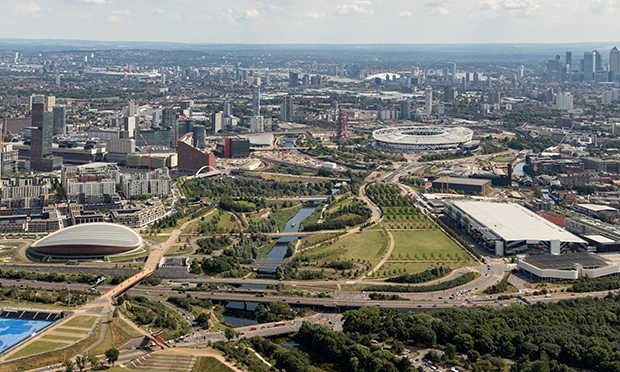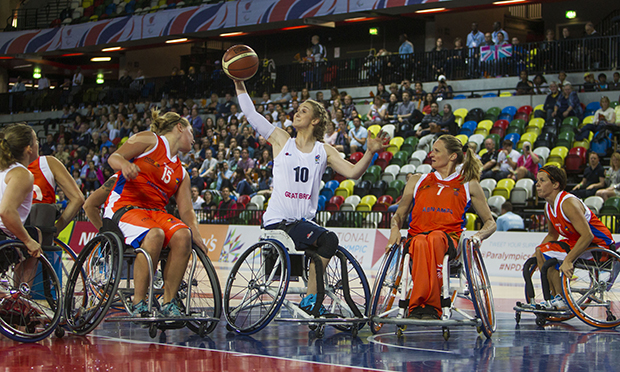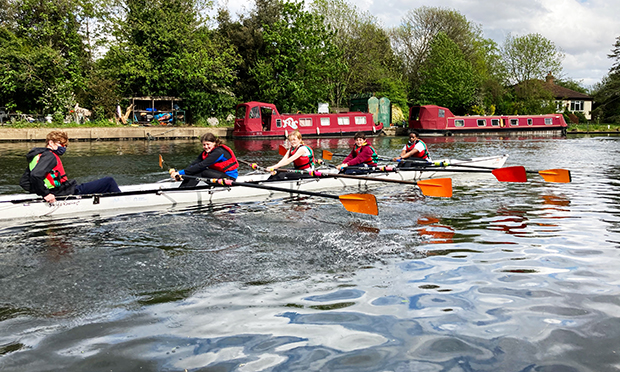Olympic legacy? Hackney residents on how London 2012 changed the borough

As athletes celebrate their haul of medals at the Tokyo Games, residents look back at the legacy of the 2012 Olympics and Paralympics in Hackney.
Hackney was one of six host boroughs for the London 2012 Games.
One of the aims was to kickstart regeneration and get more people involved in sport as a lasting legacy.
The £7bn project was not without upheaveal and in Hackney, allotmenteers fought fruitlessly to stay at Manor Gardens.
Hackney Travellers were also relocated as their site was earmarked for part of the Olympic Park.
The media and broadcast centre built at Hackney Marshes has since become a creative and cultural hub.
“It’s exceeded our expectations in what they have achieved there,” said Paul Brickell, head of regeneration and community partnerships at the London Legacy Development Corporation (LLDC).
Rebranded as Here East, it is home to universities including Loughborough, UCL and Staffordshire, alongside businesses from BT Sport to Matches Fashion, with 3,800 workers and students.
“It’s a really lively academic and business cluster,” said Dr Brickell.

Tim Evans from Hackney Marshes Users Group said the legacy is mixed: “When the Olympics were awarded to London, I thought ‘Oh God’. It very quickly became clear that this was going to be a massive side swipe at the Marshes and that’s exactly what happened.
“It’s a steamroller.”
He added: “The Marshes used to be just trees, now it’s the Olympics Park and the Arcelor Mittal Orbit. It depends on how you like your skyline. It’s a big change.”
East Marsh was paved over temporarily as a coach park. Hackney Council’s plans to use some of the paved area for another car park were kicked into touch after a Common Land Inquiry. Instead, a nature reserve was created .
Another loss was the Eastway Cycle Circuit, used by disability cycle group Pedal Power.
Evans thinks the money could have come to Hackney without the upheaval: “It’s a bit like saying that Teflon justifies the money spent on the space race. It’s not a sensible way to pull in funding, because there’s so many strings attached to satisfy the demands of the Olympics committee.”
At Hackney Marshes, the council replaced old changing rooms with the North Pavilion, including a café and new toilets for footballers and spectators.
Hackney Wick councillor Nick Sharman said the playing fields are “one of our proudest facilities”.
“It definitely raised the profile and investment to Hackney Marshes,” he added.
However he said it was not a “radical long-term” change.

The Games introduced audiences to new sports.
Lea Rowing Club is close to the Olympic Park. During the Games, Matt Pooley recalled crossing the bridge into the park and seeing rowers in the canal nearby.
Now club captain, he said the Olympics and the success of Team GB helped boost the club.
“Lots of people were interested in the sport. We had a learn to row programme, which has continued.
“People saw a sport that they had never really considered before and saw it happening at a space they had never really considered.”
He added: “We have doubled in size.”
Cllr Sharman believes another legacy was increasing house prices: “Basically we’ve got a property-driven development. Flats in Hackney Wick are north of half a million pounds.”
He added: “What it did do was drive up the land prices and overheat the whole of Hackney and Newham.”
Brickell recalled battles over the amount of affordable housing as the figures were too low, and it has now increased.
“The only way to have done better would have been to get a lot more public subsidy to make more affordable homes,” he said.
Cllr Sharman praised new facilities like the Copper Box sports centre but feared the Games had “almost zero impact” on participation and boosts to health.
“As so often in east London there are almost two worlds, with people fairly near the edge, for whom it is not helpful and is harmful if you lack housing,” he added.
“The Olympics did not cure the world.”
